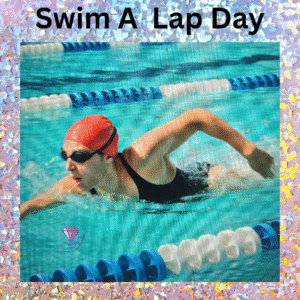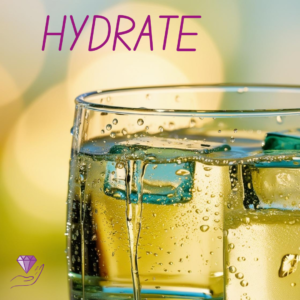Why Massage Therapy is a Game Changer for Swimmers
Swimming is one of the most demanding sports, requiring immense strength, endurance, and flexibility. Whether you’re a competitive swimmer training for a race or someone hitting the pool for fitness, your muscles undergo a lot of strain. Enter massage therapy, a powerful tool to enhance performance, aid recovery, and support overall well-being.
This blog dives into the benefits of massage therapy, why it’s particularly effective for swimmers, and how to incorporate it into your routine for optimal results.
The Role of Massage Therapy in Swimming
Swimming works nearly every muscle in the body, especially the shoulders, back, core, and legs. Each stroke engages these muscles in repetitive motions, which can lead to fatigue, tightness, or even injury if not managed properly. Massage can address these challenges head-on by reducing tension, minimizing soreness, and boosting circulation. 
For swimmers, massage therapy isn’t just a luxury; it’s a performance-enhancing tool that keeps muscles primed, reduces the risk of injury, and aids faster recovery.
Benefits of Massage for Swimmers
1. Enhances Muscle Recovery
After an intense swim session, your muscles often accumulate lactic acid, leading to soreness and stiffness. Massage can help drain lactic acid through increased blood flow and lymphatic circulation. This promotes faster recovery, ensuring you’re ready for your next swim session sooner.
2. Improves Flexibility and Range of Motion
Swimmers rely on flexibility for efficient strokes. Tight muscles, especially in the shoulders and hips, can restrict movement and reduce performance. By relaxing and lengthening these muscles, massage therapy increases flexibility and supports a greater range of motion, enabling smoother, more effective strokes.
3. Reduces Muscle Tension and Stress
Swimming places repetitive strain on key muscle groups, especially the rotator cuff and surrounding areas. Over time, this tension can lead to discomfort or even overuse injuries. Massage alleviates this by loosening tight muscles and easing stress. It also targets trigger points, which are specific areas of muscle tightness that often cause referred pain.
4. Prevents Injuries
Prevention is always better than cure, particularly in swimming, where overuse injuries like shoulder impingements or lower back strains are common. Massage therapy helps identify and address muscle imbalances, adhesions, or tightness before they lead to injury, keeping you in top condition.
5. Boosts Performance
Feeling like you’ve hit a plateau in your swimming performance? A massage could make a difference. By improving blood flow and muscular balance, massage ensures your muscles can perform at their best. Additionally, relieved tension and a clear mind can contribute to better focus and energy in the pool.
6. Promotes Relaxation and Mental Recovery
Remember, the benefits of massage go beyond the physical. Swimming often requires mental resilience, especially during races or long-distance training. A massage session promotes relaxation, reduces stress, and helps you achieve a state of mental clarity for optimal focus.
Types of Massage Techniques for Swimmers
Different massage techniques cater to various needs. Here are some of the most beneficial for swimmers:
1. Sports Massage
Specially tailored for athletes, sports massage focuses on improving performance and preventing injuries. It often involves deep tissue techniques targeting specific problem areas and pre- or post-swim treatments to optimize recovery.
2. Deep Tissue Massage
For those dealing with persistent tightness or soreness, deep tissue massage aims to release deeper layers of muscle tension. It’s particularly effective for chronic knots and improving mobility over time.
3. Swedish Massage
This is a gentler approach, with light-to-moderate pressure and long, sliding strokes. While it’s less intense, Swedish massage is excellent for relaxation, reducing stress, and aiding general muscle recovery after less demanding swim sessions.
4. Trigger Point Therapy
Trigger point therapy zeroes in on specific “knots” or tight spots in the muscles that cause discomfort. It works wonders for swimmers dealing with localized pain or tension, often in the shoulders or back.
When and How to Incorporate Massage Therapy
Wondering how to integrate massage therapy into your swimming routine? Here’s a practical framework:
- Pre-event Massage: Aim for a light, invigorating massage to prepare your muscles for peak performance. This can enhance circulation, loosen tight muscles, and improve focus before a race or intense training session.
- Post-event Massage: After a race or heavy swim practice, opt for moderate pressure to help with recovery, reduce soreness, and drain metabolic waste.
- Regular Maintenance Massage: For ongoing support, schedule massages weekly or bi-weekly. A consistent schedule helps address long-term muscle tightness and aids overall performance and injury prevention.
Pro Tip 💡 Consider pairing massage therapy with other recovery methods like stretching, hydration, and mobility exercises for maximum benefits.
Real-Life Success Stories
Elite swimmers and Olympic-level athletes often credit massage therapy as a key part of their regimen. Take Michael Phelps, for example. Known for his rigorous training routines, Phelps used a combination of massage, cupping therapy, and other recovery techniques to keep his muscles in peak condition throughout his career.
Whether you’re gunning for Olympic gold or simply striving to beat your personal best, incorporating massage into your routine can significantly elevate your swimming experience.
Choosing a Professional Massage Therapist
When seeking help from a professional massage therapist, look for someone experienced in working with athletes or swimmers. Here are some tips:
- Ask for Credentials: Make sure they’re certified and trained in sports or therapeutic massage techniques.
- Communicate Your Needs: Share details about your swimming schedule, common problem areas, or any injuries. This allows the therapist to tailor treatments specifically for you.
- Read Reviews: Look for reviews or referrals from fellow swimmers to ensure you’re choosing someone reputable.
Final Thoughts: Swim Stronger, Recover Smarter
Massage therapy is a powerful way to support your swimming goals. From faster recovery to enhanced flexibility and reduced risk of injury, the benefits are undeniable. Whether you’re a seasoned competitor or someone swimming for fitness, adding massage therapy to your routine can help you swim stronger, recover smarter, and truly enjoy your time in the water.
Take the plunge and make massage part of your training toolkit! Your muscles will thank you.


